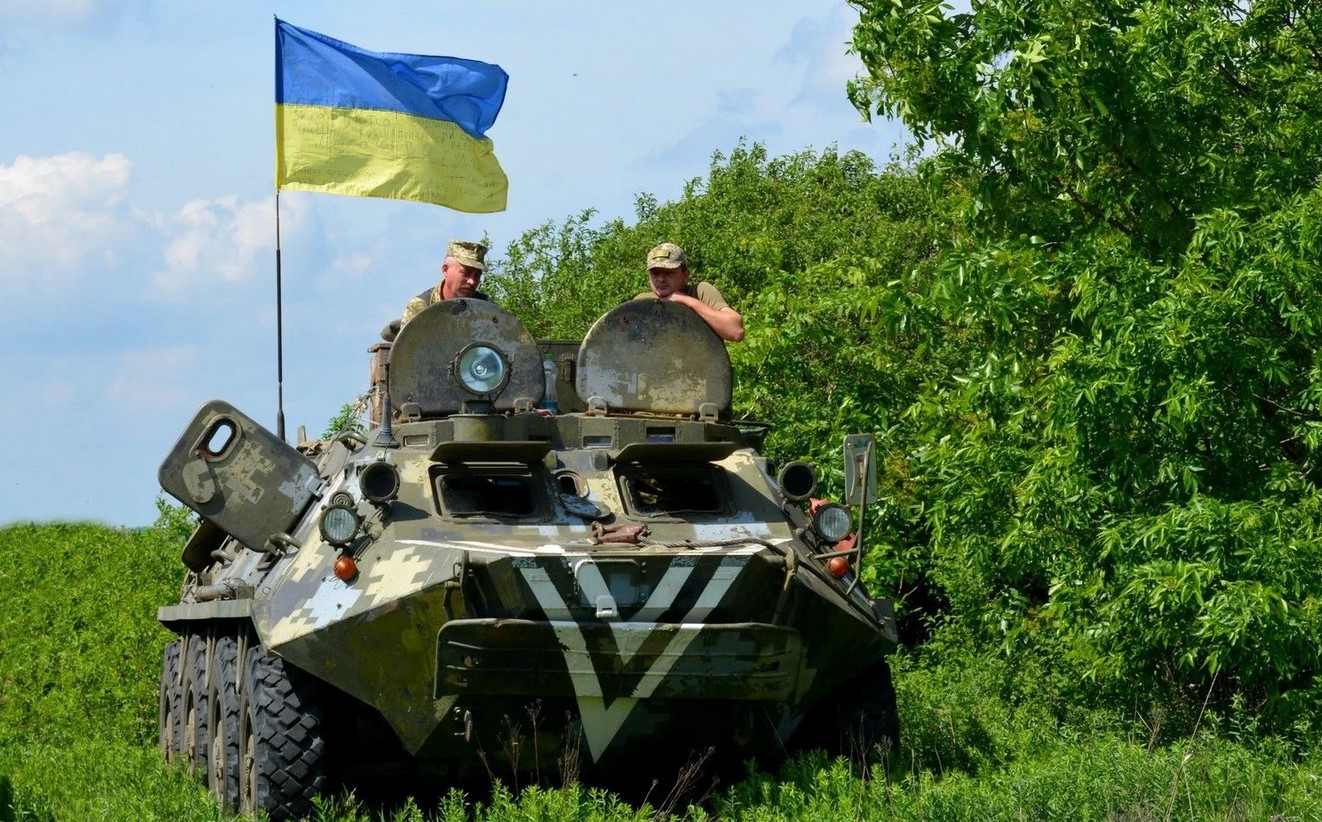Over 100 BTR-60s delivered by Bulgaria have joined the fight in Ukraine

The Ukrainian 156th Mechanized Brigade has recently received a batch of modernized Bulgarian BTR-60s, with over 100 vehicles undergoing extensive refurbishment in Ukrainian facilities. Photos shared by the brigade’s press office show these Cold War-era APCs, which, despite being over five decades old, are already actively participating in training exercises. The vehicles have been significantly upgraded, notably replacing their outdated Soviet-era GAZ-40P gasoline engines with new German-made Deutz engines.
One striking modification is the absence of additional armor, as seen in the prototype presented in April 2024. Instead, the refurbished BTRs now feature foldable anti-drone mesh structures, likely a strategic response to contemporary battlefield threats.
Although it remains uncertain whether these upgraded BTR-60Ds are equipped with Lybid K-2RB digital radios, SN-4215 navigation systems, or night vision optics for the crew, it is clear that Ukrainian forces are now equipped and ready for upcoming operations.
Commenting on the transfer, Bulgarian lawmaker Ivaylo Mirchev shared on Facebook, “These nearly 120 old BTRs we sent to Ukraine were paid for by Denmark. The Ukrainians have upgraded them faster than Bulgaria could transport them.”
Initially delayed due to funding issues and a veto by President Rumen Radev, who opposed military aid to Ukraine, the donation of these former Ministry of Interior vehicles was finally approved in November 2023. Now, they are actively deployed.
The BTR-60, a Soviet-designed APC, revolutionized mechanized infantry transport when it was introduced in the late 1950s. As the first vehicle in the BTR series, it laid the groundwork for the Soviet Union and its allies' eight-wheeled APCs throughout the Cold War.
Designed to improve battlefield mobility and troop protection, the BTR-60 boasted all-wheel drive, amphibious capability, and an open-top turret for mounting various armaments. Its development stemmed from World War II lessons, where the Red Army's reliance on trucks for troop transport left soldiers vulnerable to enemy fire.
The BTR-60’s dual-engine setup, with two GAZ-40P gasoline engines powering separate sides of the vehicle, allowed for redundancy but posed maintenance challenges. This unique design meant that even if one engine failed, the vehicle could still drive on one side, providing operational flexibility in difficult conditions.
With its eight-wheel configuration and independent suspension, the BTR-60 could traverse rough terrain with ease—a key feature in Soviet military doctrine, which emphasized mobility and rapid deployment.
Variants like the BTR-60PB, introduced in the mid-1960s, were equipped with a turret mounting a 14.5mm KPVT heavy machine gun and a 7.62mm PKT coaxial machine gun, providing solid firepower against light vehicles, infantry, and low-flying aircraft. Despite lacking advanced targeting systems, the BTR-60PB became the most widely produced and exported model, seeing action in conflicts across Africa, the Middle East, and Asia.
The BTR-60’s amphibious capabilities allowed it to travel up to 10 km/h (6 mph) on water, although its performance was relatively slow, and it required calm conditions for effective operation. Its welded steel armor provided protection against small arms fire and shrapnel but was insufficient against heavier weapons like autocannons and anti-tank missiles.
With a crew of two and space for up to eight fully equipped infantry soldiers, the BTR-60 provided protection and mobility but had vulnerabilities, such as exposed side doors, which later APC designs sought to address with rear ramp exits.
As a result of years of upgrades, including diesel engine conversions, enhanced communications systems, and additional armor, the BTR-60 has managed to extend its service life well beyond its original design. Some nations, particularly in Eastern Europe and the Middle East, integrated Western components like German Deutz engines and modern radios into their BTR-60 fleets.
Throughout the Cold War, the BTR-60 saw action in numerous conflicts, including the Soviet-Afghan War and the Iran-Iraq War. While it lacked the protection and firepower of more modern APCs, its reliability, simplicity, and adaptability made it a valuable asset for both regular and paramilitary forces.
Today, despite its limitations, the BTR-60 continues to serve in some armies, including Ukraine, where it has been thoroughly modernized with new engines and battlefield enhancements to meet the demands of contemporary warfare. While no longer a frontline vehicle, the BTR-60’s legacy lives on through its influence on subsequent BTR models and its enduring presence in global military doctrine.
https://www.youtube.com/watch?v=wVLN7DCjH4M
 Latest news
Latest newsGeorgia and the European Union: Transformation of Foreign Policy in the Context of European Integration
11.Dec.2025
Half of Azerbaijanis’ Income Goes to Food: Hidden Causes and Possible Consequences for the Economy
11.Dec.2025
Ukraine on the Threshold of a Political Shift: Updated Peace Plan and Zelensky’s Statement on Readiness for Elections
10.Dec.2025
Russia Proposes New Medal for Evacuating Bodies from Combat Zones
09.Dec.2025
The Shadow of Kadyrov in Yerevan: How a Woman Who Fled Violence Was Killed?
09.Dec.2025
Ukraine is Strengthening its Army amid a Growing Threat
08.Dec.2025
Ukraine Strengthens Its Army Amid Growing Threats
08.Dec.2025
Moscow and Beijing Conduct New Air-Defense Drills: What Lies Behind the Strengthening of Their Joint Shield?
07.Dec.2025
Russia–India: A New Architecture of Partnership. What Stands Behind Putin’s Visit to New Delhi?
06.Dec.2025
The National Security Strategy of Armenia: Analysis of Current Threats and Strategic Approaches
05.Dec.2025

 15 Dec 2025
15 Dec 2025








